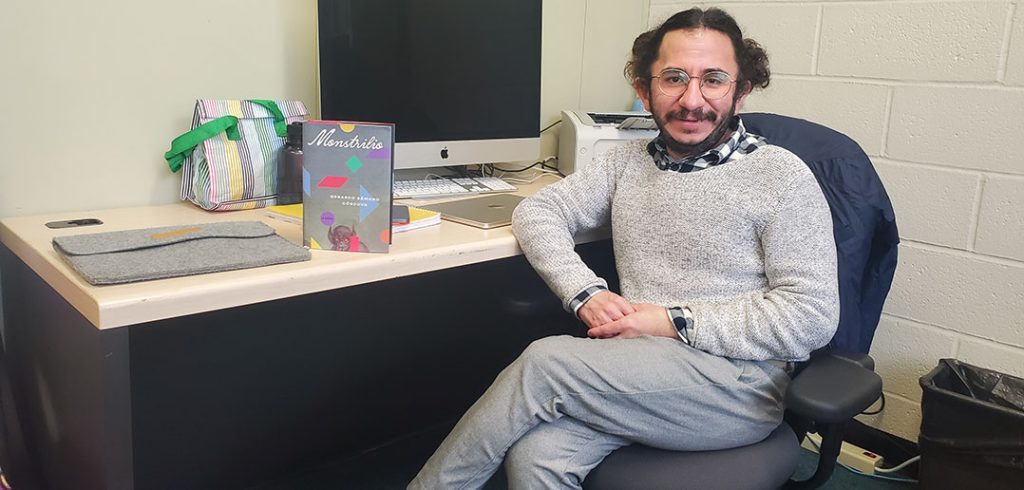Your book Monstrilio is a poignant literary novel and a horror story at the same time. What is it that draws you to horror as a way to explore deeper themes?
I think horror is an immediate way to be excited or creeped out or invested in something. And I think that atmospheres and feelings that horror can evoke are visceral. I like the idea of not everything being intellectual, but rather when a piece of work can also evoke raw emotion.
Monstrilio is very much in line with the trend of “elevated horror” that can be seen in films such as Get Out or Hereditary. Was this an influence on you?
With elevated horror, it’s done something to the culture that is like ‘OK I can do something different.’I think horror has also been pushed aside as not serious, and I think that has been a benefit in some ways because it’s like ‘I can do whatever I want if nobody’s going to take me seriously anyway.’
Being in that space allows you to do things you might not do if you’re just trying to be a ‘serious’ literary writer—I can be entertaining, but also smart.

The central mythology of Monstrilio—which involves the loss of a child—is explained in a folktale that one character tells another while they are in Mexico. Was this based on something?
This particular tale is something I came up with, but I wanted it to feel like it was old. I’ve seen this idea of bringing things back to life in so many folklores from around the world. The idea of losing a child has such an impact and so many tales around it—the Changelings, where you get a child that’s not your own, La Llorona in Mexico. I think all of those influenced me.
What was your initial spark of inspiration when you started writing the book?
I wanted to see if these characters could love something that’s monstrous. How far can love be stretched? Does it break? So I wanted to test the family and see if they could love a monster, and could that hold up? Not just love they have for each other, but self-love too.
Monstrilio has a very unique form that uses four different perspectives. How did you arrive at that?
Before I became a writer, I studied film and photography. One of the things I learned is how you place photographs on a wall for an exhibition and I found that really fascinating—how you create a sequence and how you think about negative space on the wall and what that creates between images. I was interested in seeing if I could do that in writing. I didn’t quite pull that off on that first try—it felt like four novellas mashed together. So I decided to do a continuous story in four different versions and that ended up making sense for Monstrilio’s character.
How has your experience at Fordham been so far?
I love the freedom I have to teach here, my colleagues are great, and my students are so dedicated. It’s been so much fun to read their work—it makes me think a lot about writing, so I’m learning a lot too. Students come up with great ideas and pick up on things I never would have.

